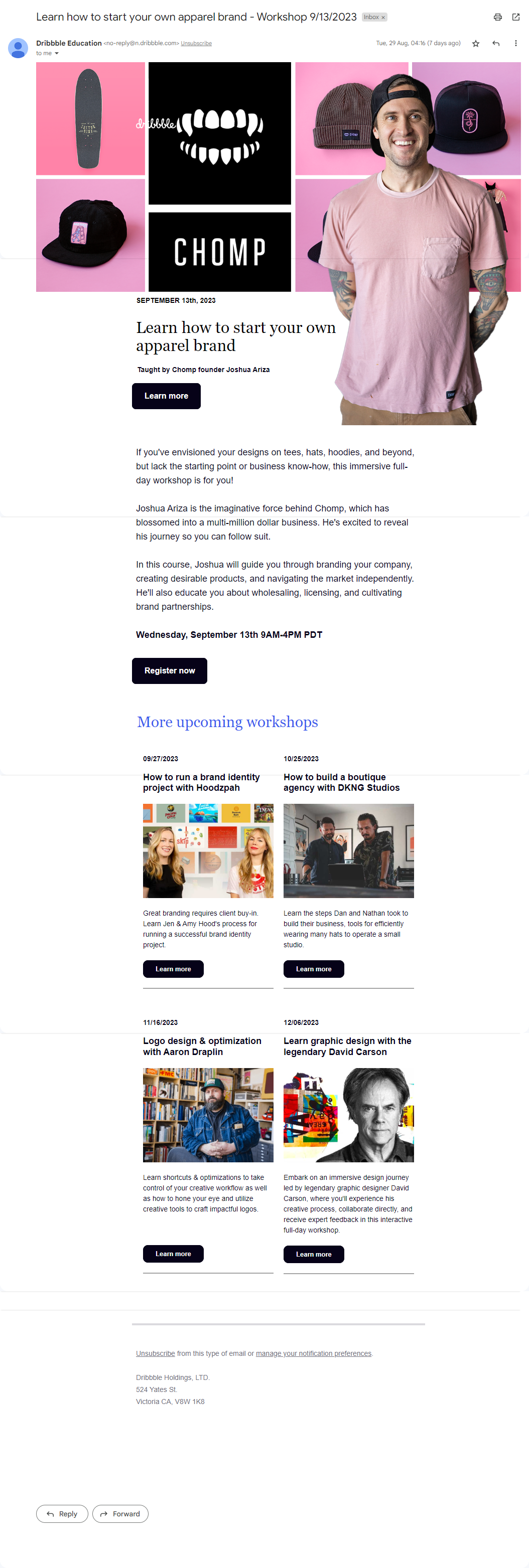[This blog was originally posted on Oct 13, 2021 and has been updated to showcase new examples.]
As adored as email marketing is by marketers and businesses alike for its ability to build strong customer relationships and the tremendous ROI that it provides, they’re also wary of the slightly ambiguous reputation that it holds of being directed into spam folders on occasion. Much of that actually derives from the “batch-and-blast” and bulk email marketing approaches, in which a business sends the same email to a large number (or all) of its subscribers.
Understanding The Bulk Email Argument
Now, that’s not exactly untrue, but to say that bulk email marketing campaigns solely contribute to higher unsubscribes and spam reports is a misleading generalization. Even though modern-day email campaigns are driven extensively by segmentation and personalization, they still can’t help but practice bulk email marketing to a certain degree. For example, suppose you’re an eCommerce store with 1000 subscribers on your list. To engage effectively with your contacts, you decide to divide them equally into four segments- “Highly Interested,” “Moderately Interested,” “Least Interested,” “Inactive,” leaving you with roughly 250 contacts in each segment.
What do you do next? Do you craft one email for each of these four segments? Or do you sit down to write a personalized email for each of the 250 contacts in every segment? Of course, you go ahead with the former. And that answers the “why send bulk email campaigns” question. Sure, now you’re sending four different personalized emails instead of sending one to all your subscribers, and there’s no denying that that’ll obviously fetch you better results. But, when your segments themselves have a sizable population, you are also inadvertently practicing bulk email, albeit in a much more planned and structured manner. Many might tell you that bulk email marketing campaigns are now a thing of the past, and while that has a certain merit, it is only half the narrative. When it comes to sending promotional emails, event invitations, and product or service-related updates, bulk email campaigns prove to be highly effective.
Simply put, bulk email campaigns have their fair share of both pros and cons. Therefore, you mustn’t write them off altogether; take stock of your requirements, and evaluate if the approach can be of any service to you before taking a call. If you’re at a crossroads, this article is just for you. Join us as we attempt to shed light on the benefits and pitfalls of a bulk email campaign!
The Pros
Breaking a little convention here to discuss the good things first. Let’s take a look!
Obtain A Wider Reach
One of the most prominent advantages of using bulk email campaigns is that they allow you to send your message to a large number of people in a short time span. This proves invaluable during lucrative seasons of the year, such as the holiday season, where your foremost priority is to reach as many inboxes as possible.
Besides enabling a better reach, bulk email campaigns tend to be relatively cost-effective as well. If you’re to invest the same amount of money, effort, and time into email blast and any other channel, the chances of you receiving a better return from the former are significantly higher.
These examples of promotional emails are bulk email campaigns sent by various brands.



Deliver Targeted Messages
In the eCommerce store example that we discussed earlier, we pretty much demonstrated how you could deliver targeted messages to your subscribers by using bulk email campaigns. The fact that segmentation, personalization, and mass email sending can go hand-in-hand presents an email marketer with limitless possibilities while executing a campaign. It empowers them to prioritize relevance even when the emails have to be sent to several contacts. Targeted messages, in turn, pave the path for increased interaction and engagement and ultimately greater sales and conversions.
Derive Better Insights
Putting out an ad in newspapers or print media, in general, might let you reach a number of people. Still, it restricts you from finding out how they reacted to your advertisement, leaving you in the dark regarding the effectiveness of your campaigns. With the help of bulk email campaigns, you can do both.
From tracking the total number of people who received the email to checking how many of them actually opened the emails, bulk email campaigns enable you to stay on top of such crucial insights. As a result, it gives you plenty of scope to identify and address the pitfalls in your campaign, thereby improving its effectiveness by leaps and bounds. Additionally, the large amount of data at your disposal provides you with an in-depth understanding of the latest consumer behavior trends, allowing you to shape your future campaigns accordingly.
Consolidate Your Brand Credibility and Identity
For people to recognize your brand or to invest their faith and trust in you, you need to:
- Engage with them regularly
- Ensure that your communication holds value for them
Bulk email campaigns help you fulfill both of these objectives with ease.
There are many ways you can go about this. For starters, you can send out email campaigns that contain helpful information about your line of products and services. This goes a long way towards fostering a sense of familiarity between your customers and your brand.
Some businesses send out newsletters in which they share valuable industry insights and shed light on all the latest industry developments and trends. Subsequently, this enables them to solidify their position as a figure of authority within their domain of operation. The bottom line is that when you persistently reach out to many people with relevant and useful content, your brand credibility and identity improve dramatically.
These bulk email examples aptly highlight out point.


The Cons
Now that you understand the benefits of bulk email campaigns, let’s look at the other side of the coin.
Increases Risk of Getting Flagged As Spam
With bulk email campaigns, the focus is invariably on reaching a broader audience base in a short time period. As a result, the relevance of your campaigns takes a hit. This, in turn, increases the risk of your emails getting flagged as spam by your subscribers.
Consequently, this leads to:
- Lower open rates and click-throughs, meaning lower engagement and lesser traffic.
- Damaged sender reputation, meaning reduced brand credibility.
Modern-day customers prize quality over quantity in everything they do, and should your bulk email campaigns fail to strike the right chords, they’ll eventually end up drawing the ire of your subscribers. It doesn’t matter how many precautions you have taken to ensure that your email gets through spam filters; ultimately, they’ll flag it as spam if the content is not to the readers’ liking.
Presents Lesser Scope for Formatting and Optimization
The templates that are sent via bulk or mass email marketing campaigns are seldom optimized for mobile. In a world where mobile devices contribute 60% of email opens, this can pose serious problems for your campaign’s visibility and eventual success. You might have put in considerable time and effort to nail your template’s design and copy, but as long as they’re not optimized and formatted, they’ll fail to render correctly across all devices.
Limits Degree of Personalization
Nothing grabs subscribers’ attention more than personalized and customized messages. Unfortunately, with bulk email campaigns, the degree of personalization you can implement in your campaigns takes a massive hit. The most you’re allowed to do is personalize your emails’ subject lines and let’s admit it – that’s not as impressive as personalized email copy or sending recommendations based on customers’ past purchasing patterns and browsing history.
Wrapping It Up
To make the most of your bulk email campaigns, it is vital that you implement them strategically. Rather than using them for all seasons and moods, you should focus on employing them during specific occasions such as Halloween, Christmas, Thanksgiving, and New Year- basically high traffic and engagement periods. Rest, you’re free to pore over the pros and cons listed above and take a call that’s best aligned with your business’s interests.




Rohan Kar
Latest posts by Rohan Kar (see all)
Agile Email Marketing: Send More Valuable Emails On Time
Getting It Dunn: Everything You Need to Know About Writing, Designing, And Sending Out Dunning Emails